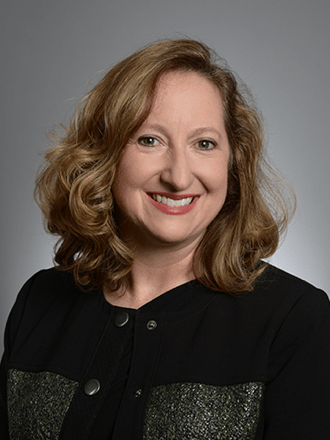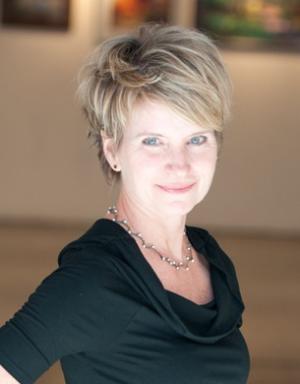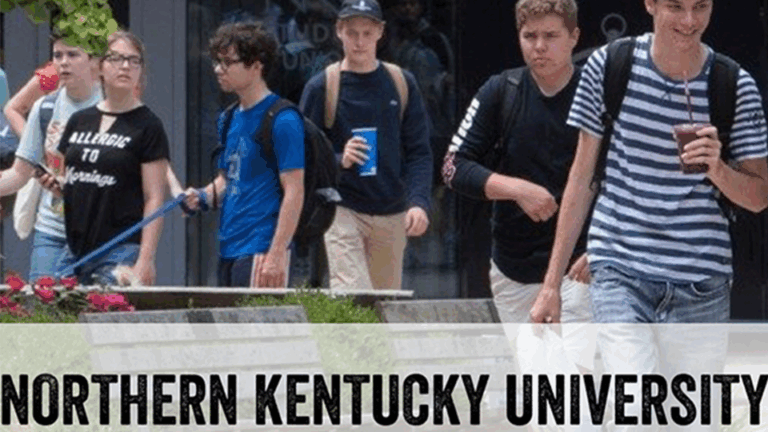Going Public: Teaching Undergraduates How to Write for Broad Audiences
Amy Lannin and Nancy West
University of Missouri
Author Note
Amy Lannin, Campus Writing Program and College of Education, University of Missouri; Nancy West, Department of English, University of Missouri.
Correspondence regarding this article should be addressed to Amy Lannin, Associate Professor and Director of Campus Writing Program, University of Missouri, Conley House, 602 Sanford Street, Columbia, MO 65211. Phone: (573) 882-1798. E-mail: LanninA@missouri.edu
Abstract
In this article, the authors examine a common question that emerged within a large writing-across-the-curriculum program and throughout multi-disciplinary collaborations: How do faculty and students step into the roles of public scholars and public intellectuals? Whether the focus is on science communication with the general public or an initiative to connect public audiences with the arts and humanities, interest and need are joining forces in higher education. To take advantage of this, the authors—two faculty members at a large research university—developed and taught an undergraduate course called “Public Intellectuals/Public Scholarship.” This semester-long course involved a group of undergraduates, all from different majors, in reading a broad sampling of texts from the arena of public scholarship and public intellectuals. Through these readings, the students explored issues of both public and personal importance. By considering audience, purpose, context, and form, the students then wrote several pieces for a public audience, resulting in publishable products. Students went from being fearful of the idea of being a public intellectual to discovering that their words did matter in the public space. This article itself exemplifies a form of public scholarship as the authors describe the course they taught in order to share it—and its implications—with the broader educational public.
Keywords: civic engagement, writing, public scholarship
Like many happy occurrences, this one started fortuitously. We were both professors turned administrators yet yearned for opportunities to connect our teaching to our work as then-director of the Honors College and current director of the Campus Writing Program at the University of Missouri. All undergraduate programs within the university report to the vice provost for undergraduate education. In an administrative meeting about a subject we no longer remember, we discovered our mutual (and secret) desire to become “public scholars”—scholars, that is, who write for broad audiences. We also shared our desire for students to become civically engaged learners with audiences beyond their teachers.
After the meeting was over, we chatted about our favorite public scholars—Michael Pollan, Louis Menand, Barbara Ehrenreich—and how unfortunate it was that no course existed that taught writers like them side by side. We fantasized about how offering such a course might inspire both of us to fess up about our secret desire (tell a colleague you wish to write for “the public,” and you run the risk of sounding pretentious and/or delusional). We were not alone in our interest; others in our circle of colleagues felt that the work we do at our university and in our classrooms should be promoted and shared. More importantly, our students should see their learning as an opportunity to engage with society in and beyond the university.
The two of us hardly knew each other, but by the end of that day, we had decided to team-teach a course called “Public Intellectuals/Public Scholarship,” which would explore the various roles and styles of such figures. We felt that the role of the public intellectual is to help us pull our head out of the sand and pay attention, to see and understand topics that are important and engaging. The course would ask students to consider how their own ideas might be shared with audiences beyond the classroom, helping them to pay attention to the world around them and communicate their learning so that others would want to pay attention as well. Just as important, the course would create an environment built on the pleasures of intellectual conversation, a space where we would range from idea to idea, topic to topic. The syllabus offered the following course description:
In this course, we will explore the guiding question of how we make the important work of academic researchers and scholars compelling to a public audience. Through analyzing a variety of case studies, we will consider the role of public scholarship and the public intellectual in contemporary culture. More importantly, we will learn how our own work can become part of the vital role of communicating to a wider audience. The course will include a variety of readings to provide an understanding of the basic elements of public scholarship. Writing assignments will allow you to write for specific audiences, including local and statewide journals and publications.
In this article, we provide background about the course, including the readings and writing assignments so that other instructors may consider replicating or adapting these ideas in other courses. More importantly, we share the view that what educators do in classrooms creates valuable relationships between them and their students and the broader public.
The Context
Faculty at our large land-grant research university face the ongoing challenges and opportunities of communicating scholarship to other researchers. In addition, faculty are increasingly encouraged to engage with broader audiences and communities, and the University of Missouri has formed a Broader Impacts Network as part of the National Science Foundation’s focus on the “integration of education and outreach into research projects” (University of Missouri, 2017). For instance, an engineering colleague explained in a faculty writing workshop that he and his students needed to write not just for other engineers but also for the general public and lay audiences. Indeed, public scholarship and engagement help tie together our teaching, scholarship, and civic engagement.
Our definition of civic engagement aligns with that of the Carnegie Classification for Community Engagement (Carnegie Foundation, 2006), focusing on the “beneficial exchange of knowledge” when university and community collaborations or communications exist. In designing our course, we debated how to define “public scholar” and “public intellectual,” and therefore we asked the students to weigh in (as we describe later). However, the basic definition we started with was that the public scholar, as the engineering professor mentioned earlier suggested, clearly communicates knowledge to a more general public. The public intellectual plays a different role by being more involved in the ongoing discourse on topics but not necessarily with the intention of reaching a public audience (yet they often get launched into public discourse because their ideas resonate with a range of audiences). Though not synonymous, the scholar and the intellectual do face similar dilemmas: for which audiences and for what purposes?
The context of our university includes an active Honors College for undergraduate students as well as general education requirements, including writing intensive (WI) courses that students must complete (i.e., two WI courses to graduate; one at an upper level in the major) and service-learning courses. One of the regularly offered service-learning courses is also writing intensive, “Service and Social Justice: The MU Community Engagement Program (MUCEP).” The director of the Office of Service Learning, Anne-Marie Foley, explained that “this course was first developed in the Honors College in 1990 and became the basis for the standards and practices of the campus-wide service-learning program.” She has taught the course each semester for 26 years, and it has been associated with multiple institutional awards, including the Carnegie Community Engagement Classification and the President’s Honor Roll for Higher Education and Community Service. In addition, MUCEP is the core course for the minor in leadership and public service and the Peace Corps Prep Global Service Certification (Writing Intensive Course Proposal, 2017). The Campus Writing Program supports the use of writing assignments as a tool for learning course content as well as learning a range of genres, many of which are disciplinary specific.
The focus of the Public Intellectuals/Public Scholarship course was our avenue for linking academic literacy work with civic engagement. We sought to do what Susan Wells (2010) presented as one of the ways to connect student writing to a public space: “Such teaching is firmly located in the social, and moves from a study of what students already know, as apprentices of the academy, to reflection about how that knowledge can be transformed” (p. 163). This transformation of knowledge brings with it the rhetorical principles of audience and purpose. In the course students needed to consider audiences beyond the classroom and relevant purposes, and then step outside of the academy with confidence that their messages mattered. Such a focus moves beyond the textbook and grade-focused pursuits of an undergraduate education.
Public Intellectuals/Public Scholarship was offered one time in the fall semester with eight students from all different majors. It was structured as a reading seminar and a writing workshop, designated as both an honors and WI course, and listed as a general honors course. It now registers in our memories as the most transformative course we have ever taught, and one we hope to teach again. Following is a closer look at the course: the reading, the writing, and its implications.
The Reading
For the first three weeks, we read various writings on the definition and role of the public intellectual and on intellectualism more generally. Among these writings was Emerson’s (1837) “The American Scholar,” Edward Said’s (2001) “The Public Role of Writers and Intellectuals,” Henry Giroux’s (2012) “The Disappearance of Public Intellectuals,” and the most extensive study of the subject, Richard A. Posner’s (2001) Public Intellectuals: A Study of Decline. We had great fun discussing Emerson’s thoughts on the “right way” to read books. With students, we questioned whether Posner was right in arguing that public intellectuals are rapidly disappearing from American society, as higher education becomes more and more corporatized.
We also arrived at our own definition of a public intellectual as someone who is knowledgeable about issues and connects with and serves the public. The public scholar may be more intentional about communicating with and reaching out to the public, whereas the public intellectual becomes launched into the public view because of the significance of the work. The line between the two is blurry—and thus rich with possibilities for further debate. One interesting aspect of this segment of the course was how clearly divided the students were about whether or not public scholars have an obligation to advocate for social change. Some felt fiercely that this was true, while others defended a more distanced and aesthetic model. The authors we studied, as we describe later, helped us see the results of becoming civically engaged by writing and publishing as public intellectuals and scholars—some of them perhaps out of obligation but all of them from a place of experience and deeply held opinions based on their own scholarship.
From definitions, we turned to case studies to explore examples, including Rachel Carson’s (1962) Silent Spring, George Orwell’s (1968) “Politics and the English Language,” Susan Sontag’s On Photography (1977) and “Notes on Camp” (1964), Michael Pollan’s The Omnivore’s Dilemma (2007) and Cooked (2013), Winifred Gallagher’s New: Understanding Our Need for Novelty and Change (2012), Malcolm Gladwell’s (2011) Outliers: The Story of Success, and Sir Kenneth Robinson’s (2011) Out of Our Minds: Learning to be Creative. We admired Gladwell’s deft use of anecdotes. We praised Gallagher for the energy and sense of wonder her writing possesses. Reading Carson’s Silent Spring, we examined how an academic’s writing can, almost overnight, become profoundly influential. We also all agreed that Robinson’s book was less provocative and interesting than his TED talk on creativity. This led to a discussion of how the work of intellectuals, once they achieve fame, often turns repetitive and predictable. It also resulted in a more generous discussion of how an intellectual like Robinson can achieve considerable success in one medium and less in another.
Michael Pollan’s work inspired us the most. We discussed his flaws, particularly his refusal to acknowledge in The Omnivore’s Dilemma that his model of healthy and sustainable living requires a certain kind of affluence. Yet, we were deeply impressed by how elegantly he packs a variety of knowledge into his writings, moving us from current facts about the corn industry to ancient myths about fertility. In Pollan’s writing, Monsanto and The Iliad happily occupy the same pages.
The true surprise in all of the readings was A.D. Sertillanges’ (1921) The Intellectual Life, published in 1921. His reflections on the contemplative life—the need to create a “zone of silence, a habit of recollection, a will to renunciation and detachment which puts you entirely at the disposal of the work”—could not be more relevant and necessary in our Wikipedia age, when whatever intellectual life most of us claim to have is superficial at best, counterfeit at worst. The students loved the book, and as one of them said, “It should be required reading for every college student.”
Two developments emerged from our discussions. The first was how much students quickly learned to enjoy the act of engaging in wide-ranging, intellectual conversations. At first, it seemed strange—and slightly delinquent—to begin class with a topic related to the course but then detour unexpectedly, as we always did, to other topics. We soon got over this, however, taking pleasure in how agile our minds felt. The second development related to how students gradually became comfortable with defining themselves as “public intellectuals,” as we discuss in the following section.
The Writing
Writing was a vital aspect and outcome of the course. Our own backgrounds in English and English education revolve around the importance of writing and the teaching of writing. As Cushman (2010) pointed out, rhetoricians can be change agents: “Given the role rhetoricians have historically played in politics of their communities, I believe modern rhetoric and composition scholars can be agents of social change outside the university” (p. 235). That is what we sought to do: help students use writing as a way to communicate with the world outside of the academy so as to make a difference with their words and engage with the public.
Students were encouraged in all of their essays to consider their audience as real, rather than a contrived school-only, teacher-only reader. In fact, several of them published their essays in local or regional publications. Such a focus on authentic audiences helped us consider length, voice, tone, and the amount of description and definition needed for each essay. For these students, this marked a profound change from what they had come to expect in their academic writing. They had been accustomed to detailed assignment requirements; now they were making decisions on their own about what was required of their essays.
Throughout the course, students kept a journal of responses to the course readings and discussions, completed three short essays, and prepared a final paper that they could choose as either a final revision of one of their earlier essays or a new essay altogether. As we read our case studies, we discovered that the writers we most admired all used storytelling. Malcolm Gladwell has a trustworthy format that relies heavily on the use of anecdotes to help illustrate his points. Therefore, we made it a requirement that the final essays had to spin a good story. The writing assignments were explained in the course syllabus as follows: “Like much of your writing in this course, the final essay should be on a subject that you’re passionate about. It should represent a culmination of your thinking and writing on that subject over the semester.”
Students tackled a variety of topics, and some of our instruction included how to find those topics that tug at you as a scholar as well as hold the interest of a general audience. Twice during the semester we met individually with students to discuss their writing plans and progress. The first conference occurred before the initial essays were due. Early in the semester, one student, an international studies major, was thinking about the definition of a public intellectual. Her topics for writing throughout the semester connected back to this idea of “scholarship of engagement” and pursuing issues of “social and environmental discourse.” An avid environmentalist, she readily embraced the idea of using her scholarship to work for the public good, writing about a trip to a local farmer’s market and, in her final essay, exposing the pathetic inadequacies of overall recycling efforts.
The writings comprised wildly different styles, approaches, and topics. An English and music major who readily admitted that she tended to “mentally hang out in nineteenth-century English literature,” wrote about aesthetic subjects. One of her essays argued vociferously that contrary to common belief, opera is not boring; another essay provided a poignant account of her visit to Faulkner’s home.
An economics major explored a variety of topics. His first essay was his favorite and the one he kept revisiting. In this piece, he considered the power of reading and presented a thoughtful narrative on the effects of Tolstoy’s The Death of Ivan Illych. An accounting major wrote about the “declining art of compromise,” moving from the days of Theodore Roosevelt and his brilliant efforts to bring a resolution to the coalminers’ strike to the more recent failures at compromise that continue to plague Washington, DC.
Why Any of this Matters
The students in the course often discussed their varying opinions about education, including their views on college education today. Such discussions made all of us wonder about the value of our academic experiences and certainly made the two of us consider why this course mattered. Following are some of the reasons why this course, or a similar one, should be taught.
To Be Brash
Edward Said stated that “there is no such thing as a private intellectual, since the moment you set down words and then publish them you have entered the public world” (p. 12). The work of the intellectual is not, according to Said, about simply imparting knowledge: “The whole point is to be embarrassing, contrary, even unpleasant” (p. 12). On the course evaluation, one student wrote: “We were encouraged to be brash.” We puzzled over what the student meant exactly, but we like to think that she left with a growing confidence in sharing ideas, perhaps similar to what Said encouraged. The work faculty do in classrooms throughout their various institutions provides more than important disciplinary content. There is the experience one finds by reading and talking with fellow scholars. The writing that faculty can and should be doing in their courses enters students into the life of a public intellectual.
Students are one way scholars connect with communities (Cushman, 2010). If students become teachers’ first line of activism as civically engaged scholars, then the work they invite their students into also ushers them into civic responsibility. In other words, it is not enough for any of us just to learn in a classroom; we should be expected to use that knowledge and engage in civic discourse.
To Spark Interdisciplinary Thinking
At a time when higher education champions the value of interdisciplinarity, our Public Intellectuals/Public Scholarship course provided a helpful model, one in which the diversity of interests enriches the topics, the readings, the discussions, and the writing. The best measure of the course’s interdisciplinarity is seen in the range of readings (as described earlier and in the Appendix) and in the students’ essay topics, including, among others, the Syrian conflict, K-12 education reform, Twitter, genocide, and turtle trapping.
To Grow as Writers
Many of the students did not identify as writers and were squeamish about the expectation that they were to write for a public audience. To address that concern, we read sections of Peter Elbow’s (1998) timeless book, Writing with Power, and the students considered how to approach and see writing as a gift to each other. We explored Montaigne’s idea of an essay as an “attempt,” an “acting out,” and the wonderful description by Michael Depp (2002) of the essay as “the art of a writer intensely in dialogue with him or herself.” Once we talked about how inconclusive and formless an essay could be, everyone relaxed—and then we all grumbled about the profound irony of being introduced to essay writing in previous educational experiences by way of the five-paragraph format.
To Critique Education
Throughout the semester we discussed whether American society has lost the value of a liberal arts education and whether an intellectual life even exists on college and university campuses. One student lamented that she never had time to reflect: “I study. I take exams. I go to lab. But I rarely have time to just think.” Another student complained vehemently about how students only see college as a means to a job. He observed that the hectic pace of campus life means that most people do not attend lectures or other academic events, even though our university invests hundreds of thousands of dollars each year to bring in key thinkers. He also complained that students have no time to take courses simply for their own pleasure or enlightenment.
To Be Public Scholars
In our own quest as academicians to write and publish, do we too easily lose sight of the reasons? As metrics are used to determine the worth of our scholarship, we may not consider our own responsibility as public scholars. As instructors, do our goals reach beyond the classroom? Cushman (2010) implicated all instructors at the end of her essay “The Ethics of Engagement”: “My sense is that we’re not doing enough because we’re acting within the role of the teacher that has been perpetuated by the institution, and thus keeps us from breaking down the barriers between the university and community” (p. 251).
Understandably, college instructors focus on working through lists and chunks of knowledge and completion of course content. Moving from “expression and analysis to action” (Higgins, Long, & Flowers, 2010, p. 180) is not how faculty generally think of their students’ education and their teaching.
We chose to teach the Public Intellectuals/Public Scholarship course so that students would be engaged in public scholarship themselves. We chose to write this article for a similar reason. By conveying the excitement of our students, we hope to inspire our colleagues to invite and mentor their own students into the role of public intellectuals. A spirit of intellectualism needs to be brought back to our campuses, no question. Why not go public with it?
References
Carnegie Foundation for the Advancement of Teaching. (2006). Carnegie classification for community engagement. Palo Alto, CA: Carnegie Foundation.
Carson, R. (1962). Silent Spring. New York: Houghton Mifflin.
Cushman, E. (2010). The rhetorician as an agent of social change. In T. Deans, B. Roswell, & A. Wurr (Eds.), Writing and community engagement: A critical sourcebook (pp. 235-253). Boston: Bedford St. Martin’s.
Depp, M. (2002). On essays: Literature’s most misunderstood form. Poets & Writers. Retrieved from http://www.pw.org/content/essays?cmnt_all=1
Elbow, P. (1998). Writing with power: Techniques for mastering the writing process. New York: Oxford University Press.
Emerson, R. W. (1837). The American scholar. Retrieved from http://digitalemerson.wsulibs.wsu.edu/exhibits/show/text/the-american-scholar
Gallagher, W. (2012). New: Understanding our need for novelty and change. New York: Penguin Press.
Giroux, H. (2012). The disappearance of public intellectuals. Retrieved from http://www.counterpunch.org/2012/10/08/the-disappearance-of-public-intellectuals/
Gladwell, M. (2000). The tipping point: How little things can make a big difference. Boston: Little, Brown.
Gladwell, M. (2011). Outliers: The story of success. Boston: Back Bay Books.
Higgins, L., Long, E., & Flower, F. (2010). Community literacy: A rhetorical model for personal and public inquiry. In T. Deans, B. Roswell, & A. Wurr (Eds.), Writing and community engagement: A critical sourcebook (pp. 167-201). Boston: Bedford St. Martin’s.
Orwell, G. (1968). Politics and the human language. In George Orwell: A collection of essays (p. 156-171). Orlando, FL: Harvest Books.
Pollan, M. (2007). The omnivore’s dilemma: A natural history of four meals. New York: Penguin Press.
Pollan, M. (2013). Cooked: A natural history of transformation. New York: Penguin Press.
Posner, R. A. (2001). Public intellectuals: A study of decline. Cambridge, MA: Harvard University Press.
Robinson, K. S. (2011). Out of our minds: Learning to be creative. Boston: Courier Westford.
Said, E. (2001).The public role of writers and intellectuals. Retrieved from http://tamilnation.co/ideology/said.htm
Sertillanges, A. D. (1921). The intellectual life, its spirit, conditions, methods. Westminster, MD: Newman Press.
Sontag, S. (1964). “Notes on ‘Camp.’” Susan Sontag: Notes on “Camp.” Retrieved from http://interglacial.com/~sburke/pub/prose/Susan_Sontag_-_Notes_on_Camp.html
Sontag, S. (1977). On photography. New York: Farrar, Straus & Giroux.
University of Missouri. (2017). Broader Impacts Network. Retrieved from http://broaderimpacts.missouri.edu/
Wells, S. (2010). Rogue cops and health care: What do we want from public writing? In T. Deans, B. Roswell, & A. Wurr (Eds.), Writing and community engagement: A critical sourcebook (pp. 151-166). Boston, MA: Bedford St. Martin’s.
Appendix
Course Readings
About the Public Intellectual
Emerson, Ralph Waldo. “The American Scholar” (An Oration delivered before the Phi Beta Kappa Society, at Cambridge, August 31, 1837)
http://www.emersoncentral.com/amscholar.htm
Gewen, Berry. “Who Is a Public Intellectual?” Arts Beat, June 11, 2008.
http://artsbeat.blogs.nytimes.com/2008/06/11/who-is-a-public-intellectual/?_r=0
Giroux, Henry. “The Disappearance of Public Intellectuals” The Crisis of Education as a Public Good, October 8, 2012.
http://www.counterpunch.org/2012/10/08/the-disappearance-of-public-intellectuals/
Lightman, Alan. “The Role of the Public Intellectual” MIT Communications Forum
http://web.mit.edu/comm-forum/papers/lightman.html
Posner, Richard. excerpts from Public Intellectuals
Said, Edward. “The Public Role of Writers and Intellectuals”
http://tamilnation.co/ideology/said.htm
Schall, James V. excerpts from The Life of the Mind: On the Joys and Travails of Thinking. (2006)
Sertillanges, A.D. excerpts from The Intellectual Life, its Spirit, Conditions, Methods. (1921)
Sowell, Thomas. “Intellect and Intellectuals”
About Writing & Language
Csikszentmihalyi, Mihaly. excerpts from Flow: The Psychology of Optimal Experience
Elbow, Peter. excerpts from Writing With Power: Techniques for Mastering the Writing Process. New York: Oxford University Press (1998). “An Approach to Writing,” “Freewriting,” and “Sharing.”
Goldberg, Natalie. excerpts from Writing Down the Bones
Hayakawa, S. I. excerpts from Language in Thought and Action
Lamott, Anne. “Shitty First Drafts”
Orwell, George. “Politics and the Human Language”
Zinsser, William. excerpts from On Writing Well and Writing to Learn (1988). New York: Harper and Row.
Case Studies About Public Intellectuals
Blakely, Mary Kay. Professor of Journalism, University of Missouri – guest speaker
Carson, Rachel. excerpts from Silent Spring
Gallagher, Winifred. excerpts from New and Just the Way you Are New and Just
Gladwell, Malcolm. excerpts from The Tipping Point
Gladwell, Malcolm various pieces in The New Yorker
Pollan, Michael. excerpts from The Omnivore’s Dilemma and Cooked
Robinson, Ken. Out of Our Minds: Learning to Be Creative.
Sontag, Susan. excerpts from On Photography
Weinberg, Steve. Professor Emeritus of Journalism at MU—guest speaker
Author Biographies
 Amy Lannin directs the Campus Writing Program at the University of Missouri and is an Associate Professor of English Education. Her work focuses on writing instruction and assessment across the curriculum and within disciplines.
Amy Lannin directs the Campus Writing Program at the University of Missouri and is an Associate Professor of English Education. Her work focuses on writing instruction and assessment across the curriculum and within disciplines.
 Nancy West is a Professor of English who specializes in Victorian, Film, and Media Studies. She is currently writing a history about the concept of charm in American culture.
Nancy West is a Professor of English who specializes in Victorian, Film, and Media Studies. She is currently writing a history about the concept of charm in American culture.


